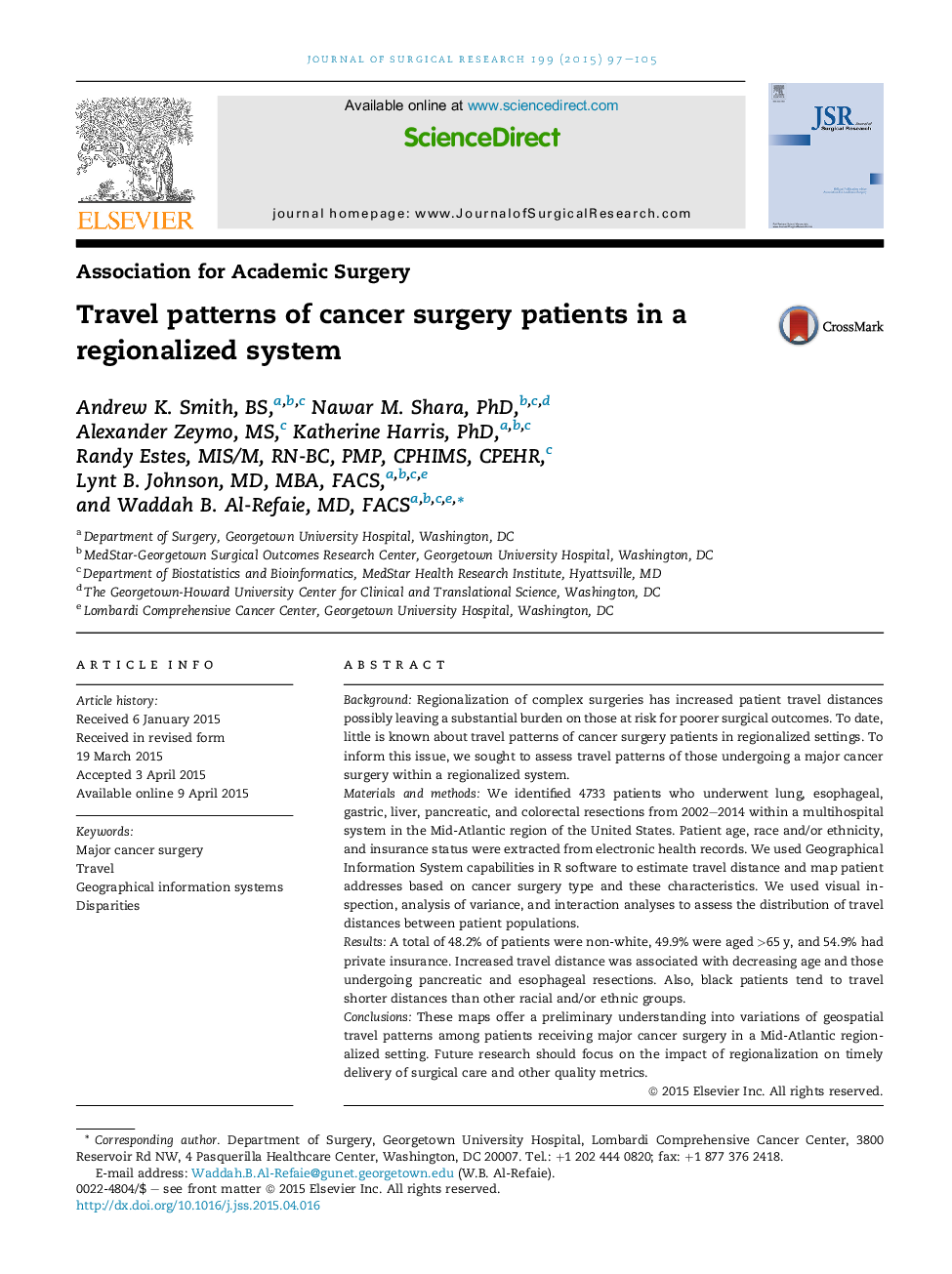| کد مقاله | کد نشریه | سال انتشار | مقاله انگلیسی | نسخه تمام متن |
|---|---|---|---|---|
| 4299599 | 1288396 | 2015 | 9 صفحه PDF | دانلود رایگان |
BackgroundRegionalization of complex surgeries has increased patient travel distances possibly leaving a substantial burden on those at risk for poorer surgical outcomes. To date, little is known about travel patterns of cancer surgery patients in regionalized settings. To inform this issue, we sought to assess travel patterns of those undergoing a major cancer surgery within a regionalized system.Materials and methodsWe identified 4733 patients who underwent lung, esophageal, gastric, liver, pancreatic, and colorectal resections from 2002–2014 within a multihospital system in the Mid-Atlantic region of the United States. Patient age, race and/or ethnicity, and insurance status were extracted from electronic health records. We used Geographical Information System capabilities in R software to estimate travel distance and map patient addresses based on cancer surgery type and these characteristics. We used visual inspection, analysis of variance, and interaction analyses to assess the distribution of travel distances between patient populations.ResultsA total of 48.2% of patients were non-white, 49.9% were aged >65 y, and 54.9% had private insurance. Increased travel distance was associated with decreasing age and those undergoing pancreatic and esophageal resections. Also, black patients tend to travel shorter distances than other racial and/or ethnic groups.ConclusionsThese maps offer a preliminary understanding into variations of geospatial travel patterns among patients receiving major cancer surgery in a Mid-Atlantic regionalized setting. Future research should focus on the impact of regionalization on timely delivery of surgical care and other quality metrics.
Journal: Journal of Surgical Research - Volume 199, Issue 1, November 2015, Pages 97–105
